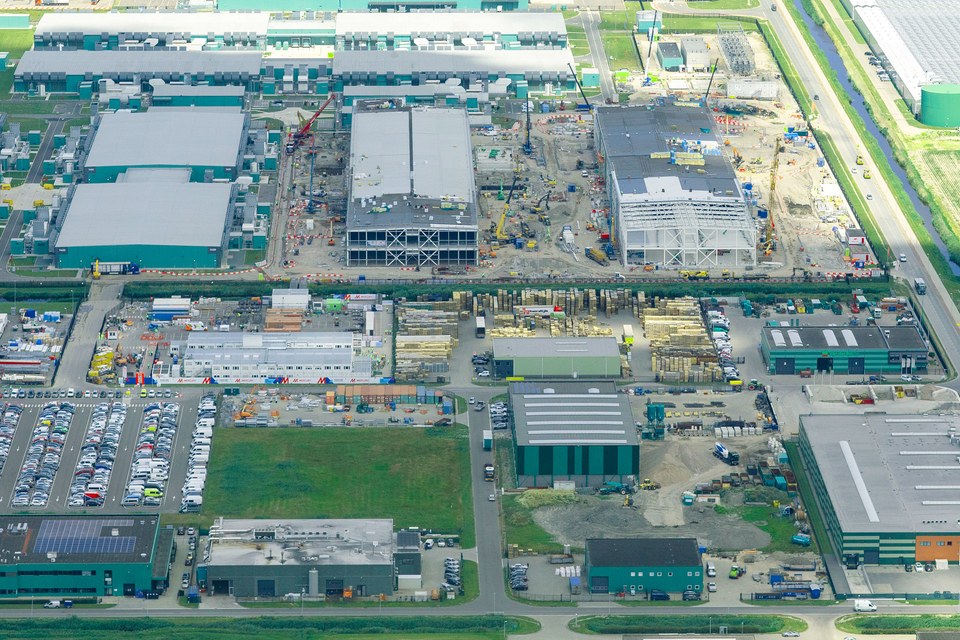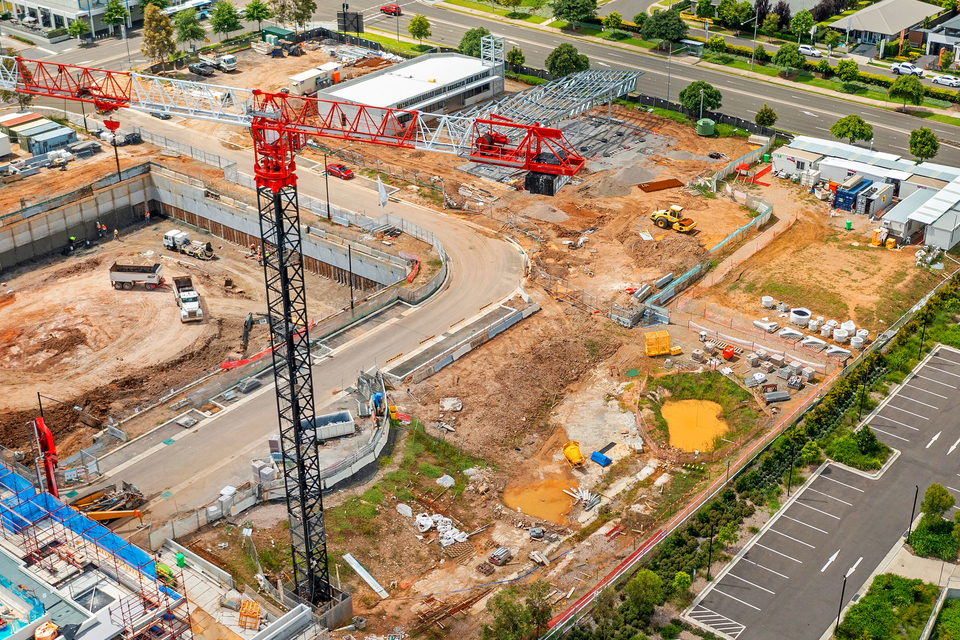Risk allocation and mitigation in energy projects
As the landscape for new energy projects evolves, parties are reassessing their appetite for risk and proactively seeking solutions to ensure success.

With an unprecedented momentum for the construction of new major projects linked to the shift away from fossil fuels and the development of a low-carbon economy, there is a real focus on construction law issues relevant to such projects
The widespread recognition of the urgent need to transition away from fossil fuels in energy systems, combined with a drive to decarbonize hard-to-abate industries, corporate and geopolitical tussles for supply chain security and market share for new green technologies, as well as various regulatory incentives and trade barriers, are collectively building unprecedented momentum for the investment in and construction of new major projects.
Such construction projects are no longer limited to wind, solar and other renewable energy; significant capital expenditure is also necessary to revolutionize heavy-emitting, fossil fuel-dependent industries such as steelmaking, alumina refining and cement production. This transformation may involve re-engineering existing plants to utilize clean energy sources and eliminate the need for coal and natural gas or adding carbon capture facilities to emitting plants.
As the transportation industry undergoes a revolution, entirely new industries are emerging, including pioneering projects for synthetic aviation fuel and gigafactories for batteries to support carbon-free mass transport. The rapid growth of the digital world, along with the current boom in Generative AI, is fueling the proliferation of data centers—one of the most energy-intensive building types—driving in turn their own need to limit electricity consumption and carbon footprint in order to achieve net-zero.
In this compendium, we take a closer look at the complexities and challenges of refurbishing and retrofitting brownfield industrial projects for a low-carbon future. We also explore methods for developing new data center projects in a more sustainable way, resulting in reduced carbon emissions.
The construction industry faces the challenge of finding appropriate and sustainable procurement and contracting structures for delivering these low-carbon projects. Many projects are of such scale or involve so many new technology risks that traditional procurement structures need to be revisited and challenged, often with the aim of better managing and sharing risks between the contracting parties, and ensuring the nurturing of new technologies.
We examine the growing use of multi-contract procurement structures in the US, and the use of collaborative contracting strategies in Australia, as well as an array of "green" contract provisions that have been introduced in FIDIC, NEC and JCT contracts to track ESG issues arising out of new construction projects.
Lastly, given that English law remains one of the dominant choices for governing major construction contracts in many jurisdictions, we conclude the compendium with an overview of the major recent developments in English construction law.
We hope you will find this compendium a useful and thought-provoking read, and look forward to exploring these themes as the landscape of major construction projects continues to evolve.
As the landscape for new energy projects evolves, parties are reassessing their appetite for risk and proactively seeking solutions to ensure success.

There is significant interest in investing into the rejuvenation of brownfield projects, but these projects face construction law challenges.

As the urgency to combat climate change escalates, the construction and engineering sectors are stepping up to the challenge. With a growing emphasis on net-zero solutions, contractual provisions tailored to sustainability are gaining momentum, highlighting a pivotal shift toward greener practices within these industries.

In recent years, escalation and price volatility have re-emerged in the global economy. The impact on large energy and infrastructure projects will be significant: Owners and contractors need to react and adapt.

As the demand for data storage grows, so does the need for more data centers with ever-increasing capacity. We examine new ways for developers to reduce energy consumption.

Amid the intricate landscape of Australia’s construction industry and geopolitical challenges looming large, collaborative contracting emerges as a powerful strategy for stakeholders across construction projects in Australia.

There have been a number of important developments in English construction law during the past two years, several of which relate to, or arose in the context of, building and fire safety. We examine their ramifications.


There have been a number of important developments in English construction law during the past two years, several of which relate to, or arose in the context of, building and fire safety. We examine their ramifications.
Key provisions of the Building Safety Act 2022, which was introduced in response to the 2017 Grenfell Tower fire, have come into force, with some of these having retrospective effect. We have also seen new case law in relation to the duty of care in tort, liquidated damages, concurrent delay, collateral warranties and dispute resolution procedures, along with the publication of new standard form contracts and clauses.
June 28, 2022
The Building Safety Act increased the scope of duty of care with respect to dwellings under the Defective Premises Act 1972 (DPA) and introduced special (extended) limitation periods in this regard.
The Building Safety Act 2022 (BSA) received Royal Assent on April 28, 2022, with a number of provisions coming into force on June 28, 2022 and others on October 1, 2023.
Key changes for the construction industry include the establishment of a new role of Building Safety Regulator within the Health and Safety Executive, which has taken on additional duties with respect to higher-risk residential buildings at least 18m (60ft) in height or seven stories. Another is that the Building Act 1984 is amended to allow for additional obligations for higher-risk buildings during the design and construction phase, and increased penalties for a breach of building regulations.
The BSA also increased the scope of duty of care with respect to dwellings under the Defective Premises Act 1972 (DPA) and introduced special (extended) limitation periods in this regard. These changes came into force on June 28, 2022, and are of particular interest given that they are in part retrospective in their effect, as considered below.
Section 134 of the BSA introduced a new section 2A into the DPA to impose a duty on anyone who, in the course of a business, "takes on work" in relation to a dwelling to: "…see that the work is done in a workmanlike or (as the case may be) professional manner, with proper materials and so that as regards the work, the dwelling is fit for habitation when the work is completed."
This expands the scope of the existing duty, which applied in relation to the provision of a dwelling, to works carried out on an existing dwelling.
Pursuant to section 135 of the BSA, the limitation period for claims under sections 1 and 2A of the DPA has been extended from six years to 15 years, or 30 years for claims under section 1 of the DPA, where such a claim accrued before June 28, 2022.
The changes are significant in that they have retrospective effect—the limitation period for claims under section 1 of the DPA accruing before June 28, 2022 is treated as if it had always been 30 years. In practice, this means that an action that was previously considered statute-barred could now be very much alive.
A safeguard provides that a claim is to be dismissed where it would breach the defendant's rights under the European Convention on Human Rights. Most likely this would be the right to a fair trial and it is possible to see how this could be raised as a defense, for example where a party has destroyed critical exculpatory documents on the understanding—which may well have been correct at the time—that any claims against it were statute-barred.
The newly amended BSA will allow for additional obligations for higher-risk buildings during the design and construction phase, and increased penalties for breach of building regulations
In a judgment handed down in July 2023, the Court of Appeal considered the point in time at which a cause of action accrued in tort against designers of a defective building in circumstances where the defect caused no immediate physical damage.
The case, URS Corporation Ltd v BDW Trading Ltd, is significant as it establishes that, in such a scenario, the cause of action will arise on completion of the building rather than when the defect is discovered. This is consistent with a claim in contract, for which the cause of action normally arises on practical completion. Although the dispute arose in the context of post-Grenfell building safety, the ruling will have implications for construction defect claims more widely.
The case also confirms the retrospective effect of the changes made to the DPA by the BSA.
The dispute concerned two residential developments that had been developed by BDW. Practical completion occurred at the latest by 2012 and, by 2015, BDW had sold the apartments on long leases and transferred its freehold interests.
Following the Grenfell Tower fire, BDW carried out a series of investigations and, in 2019, discovered defects with the structural design, which had been carried out by URS. However, they had not resulted in any physical damage. BDW paid for remedial works to be carried out and then brought a claim in the tort of negligence against URS to recover the costs. Any claim in contract was presumably statute-barred.
The Court of Appeal was asked to determine various preliminary issues, including when the cause of action accrued and whether BDW could in fact file a claim under the amended DPA.
First, the court confirmed that physical damage was not needed for a claim to arise in tort. In relation to when a cause of action would arise, after extensive deliberation of the relevant authorities, the court concluded that: where there is physical damage, the cause of action accrues when the physical damage occurs, regardless of the claimant's knowledge of the physical damage or its discoverability; and where there is no physical damage, the cause of action accrues on completion of the building, regardless of the claimant's knowledge of the defect.
Accordingly, the cause of action arose (at the latest) when practical completion occurred.
The issue of limitation itself—whether BDW's claim was nonetheless statute-barred—which the court described as "the ghost at the feast," did not fall within the scope of the preliminary issues.
A separate issue in the case was that BDW had sought to amend its claim to take advantage of the longer limitation period for bringing a claim under section 1 of the DPA, as introduced by section 135 of the BSA.
URS argued that BDW could not do so, as it had already commenced litigation proceedings before June 28, 2022, when section 135 of the BSA came into effect. The court rejected URS's argument, noting that the retrospective effect of section 135 could not be any clearer and that there was no carve-out for ongoing litigation.
The court also confirmed that a duty can be owed to a developer under section 1 of the DPA, notwithstanding that the developer itself might owe such a duty to subsequent purchasers.
Permission to appeal the Court of Appeal's ruling has been granted, so we may see some or all of the above matters being reconsidered by the Supreme Court.
December 2022
The FIDIC published a series of amendments to its 2017 suite of standard form construction contracts (the Red, Yellow and Silver Books
The courts have also recently considered whether an unenforceable liquidated damages (LDs) provision can act as a cap. The Technology and Construction Court (TCC) handed down judgment in July 2022 in the case of Buckingham Group Contracting Ltd v Peel L&P Investments and Property Ltd, ruling on whether an LDs clause, which was found to be ineffective, could nonetheless cap general damages for delay.
Although the court's observations on this point were technically made in passing, they add support to the position that ultimately it is a matter of contractual interpretation whether an unenforceable LDs provision can act as a cap. While enforceability should not be an issue where LDs provisions are well drafted and properly considered, parties should nonetheless ensure that any cap is worded in such a way that it is clear whether it is to limit general damages for delay should the LDs regime be rendered unenforceable.
Peel engaged Buckingham as the contractor on a project to construct a manufacturing plant. The contract was based on the JCT Design and Build Contract 2016 but contained bespoke provisions dealing with LDs with respect to milestone dates that included a "cap on maximum LADs" in the amount of £1.9 million.
The works were delayed and Peel sought to levy LDs against Buckingham. In response, Buckingham argued that the LDs provisions in the contract were void and unenforceable due to uncertainty, and that any remedy with respect to general damages was capped in the amount of £1.9 million.
The court concluded that the LDs provisions were certain and enforceable. However, it went on to consider whether, had they not been, they could have had the effect of capping general damages for delay at £1.9 million.
The starting point was that, if an LDs provision was void, then it was wholly unenforceable. However, the next step was to ask whether, on a proper construction of the clause in question, it also operated as a parallel general limitation of liability provision, which could be enforced even if the LDs were void or penal.
In the present case, the language of the cap ("on Maximum LADs") was clear that it only applied to LDs. It was also relevant that it was contained in a schedule exclusively concerned with milestone dates and applicable LDs.
Accordingly, the court concluded that it would not have had the effect of capping general damages for delay.
A collateral warranty can be subject to the the Housing Grants, Construction and Regeneration Act 1996 even if it was executed several years after the works were completed
In its October 2022 judgment in Thomas Barnes & Sons plc v Blackburn with Darwen Borough Council the TCC found that a contractor risk event and an employer risk event were concurrent causes of delay as either event, had it occurred by itself, would have delayed completion.
This case has significance as on one view the court's reasoning appears to indicate a departure from what is sometimes referred to as the "first in time" approach, being that where, for example, an employer delay occurs after the commencement of the contractor delay, the only effective cause of delay is the contractor risk event. This is the approach recommended in the 2nd Edition of the Society of Construction Law's Delay and Disruption Protocol.
The council appointed Thomas Barnes as the main contractor on a project to construct a bus station, including an office hub area. The works were delayed and the council ultimately terminated Thomas Barnes' employment and appointed another contractor.
A key issue before the court was Thomas Barnes' claim for an extension of time due to delays caused by problems with steel deflection, for which the council was responsible, in circumstances where, during this period of delay, delays arose with respect to the roof covering works for which Thomas Barnes was responsible.
The court determined that, during a certain period, the steel deflection issue and the roof covering issue were concurrent causes of delay. This was because both remediation of the steel deflection issue and completion of the roof coverings were essential for the hub finishes to be meaningfully started.
The court observed: "It is not enough for the claimant to say that the works to the roof coverings were irrelevant from a delay perspective because the specification and execution of the remedial works to the hub structural steelwork were continuing both before and after that period of delay. Conversely, it is not enough for the defendant to say that the remedial works to the hub structural steelwork were irrelevant from a delay perspective because the roof coverings were on the critical path."
Applying established principles, Thomas Barnes was entitled to an extension of time for the period of concurrent delay but not additional costs.
In Abbey Healthcare (Mill Hill) Ltd v Simply Construct (UK) LLP, the Court of Appeal held that a collateral warranty was a construction contract for the purposes of the Housing Grants, Construction and Regeneration Act 1996 (HGCRA) and therefore contained a statutory right to adjudication.
The case is significant in that it expands the circumstances in which the HGCRA, and therefore the statutory right to adjudication, will apply to collateral warranties. While the TCC had previously ruled in a 2013 case that the HGCRA had applied to a collateral warranty, in that case the warranty included the crucial words "acknowledges and undertakes." Such wording was not present in the collateral warranty in Abbey, and the absence of such wording in a collateral warranty had until now been regarded by many as meaning that the HGCRA would not apply.
The case also makes it clear that a collateral warranty can be subject to the HGCRA even if it was executed several years after the works were completed.
Simply Construct was engaged to build a care home and, some four years after completion of the work, provided a collateral warranty to Abbey as tenant. Under the warranty, Simply Construct warranted that it "has performed and will continue to perform diligently its obligations under the contract."
Fire safety defects were discovered in the care home, and Abbey brought adjudication proceedings under the collateral warranty to recover remedial costs. Abbey was successful in the adjudication but, when it sought to enforce the adjudicator's decision, Simply Construct argued that the adjudicator had lacked jurisdiction.
The HGCRA provides parties to a "construction contract" (defined as an agreement for the carrying out of construction operations) with a statutory right to refer disputes to adjudication.
The majority of the court concluded that it was possible for a collateral warranty to be a construction contract as defined by the HGCRA. An agreement for the carrying out of construction operations was a broad expression that went beyond the primary building contract.
Ultimately, it would depend on the wording of the warranty in question. The court distinguished between a warranty that related only to a past state of affairs, and a warranty that the contractor was carrying out and would continue to carry out construction operations to a specific standard. The former was more likely to be an agreement for the completion of construction operations.
As the warranty contained a promise for the future—that Simply Construct would carry out the construction operations in accordance with the building contract—then, as a matter of common sense, it was an agreement for the completion of construction operations and therefore a construction contract.
The court said that the fact that the warranty had been executed long after completion of the work was of little relevance to its categorization, as it contained future-facing obligations and was retrospective in effect; and it would be counter-intuitive as a matter of statutory construction if the date of execution impacted whether the warranty was a construction contract.
Permission to appeal has also been granted in this case, so again we may see some of the above points reconsidered by the Supreme Court.
The EPCM model, under which the employer enters into individual contracts with works contractors and suppliers, and separately appoints an EPCM contractor to procure and manage the contracts on its behalf, has become increasingly popular in recent times
In Kajima Construction Europe (UK) Ltd v Children's Ark Partnership Ltd, handed down in March 2023, the Court of Appeal considered whether proceedings that had been brought in breach of a contractual dispute resolution provision should be struck out or stayed, in circumstances where the limitation period had since expired.
While technically obiter, the case confirms that a stay will be the usual but not automatic relief granted where proceedings are brought in breach of a contractual dispute resolution provision, and that limitation will be a relevant but not decisive consideration.
Children's Ark had engaged Kajima to carry out redevelopment works at a hospital. The contract provided that no claim could be brought against Kajima after 12 years from completion of the works. It also contained a requirement to refer disputes to a liaison committee for resolution prior to commencing litigation.
Shortly before the limitation period was due to expire, Children's Ark began litigation proceedings against Kajima in relation to alleged defects in the works relating to fire safety. Kajima argued that as Children's Ark had failed to refer the dispute to the committee, the litigation should be struck out.
The court held that the committee procedure set out in the contract was unenforceable for uncertainty. However, of wider relevance is that the court went on to consider whether, had it been enforceable, the judge at first instance would have been correct to exercise her discretion to order a stay of proceedings.
The judge had described a stay of proceedings as the "default remedy" where a party commenced proceedings in breach of a contractual dispute resolution clause. The Court of Appeal did not consider it to be a default remedy in the sense of an automatic or inevitable relief, but agreed that it would be the "usual" remedy.
It is notable that counsel were unable to find any case where proceedings brought in breach of a contractual dispute resolution clause were struck out, as opposed to being made the subject of a stay.
The court also considered that the judge had been correct to take the issue of limitation into account. In particular, it was not a case where the limitation period was in danger of being missed through indolence or incompetence.
The reason why such a long time had elapsed since the original construction works had been carried out was because of the tragedy at Grenfell, the consequential survey, the discovery of alleged defects and the ongoing remedial works.
While the deprivation of a limitation defense for Kajima was an important element of the balancing exercise, it alone was not decisive.
In December 2022, the FIDIC published a series of amendments to its 2017 suite of standard-form construction contracts (the Red, Yellow and Silver Books) and incorporated them into reprinted versions of the contracts.
Most of the amendments are relatively minor, but notable changes include increased clarity around what constitutes a "matter" or "matter to be agreed or determined," which are not subject to the claims process under clause 20. The FIDIC also narrowed the circumstances in which a claim can be referred directly to the Dispute Avoidance/ Adjudication Board (without first being referred to the engineer or employer's representative); and the definition of an "Exceptional Event" (the term used for a force majeure event) now expressly requires the event to be exceptional.
A reprint of the FIDIC Emerald Book (for underground works) was later published in November 2023, in large part to incorporate the changes to the Yellow Book on which it is based
In April 2023, the Institution of Chemical Engineers published a standard-form engineering, procurement and construction management (EPCM) contract, known as the Blue Book.
The EPCM model, under which the employer enters into individual contracts with works contractors and suppliers, and separately appoints an EPCM contractor to procure and manage the contracts on its behalf, has become increasingly popular in recent times. The FIDIC has also announced that it is working on a standard-form EPCM contract.
In July 2022, the NEC published new climate change clauses (option X29) for use with its standard-form contracts. The clause makes a provision for climate change requirements with which the contractor has to comply, a climate change plan setting out the contractor's strategy for achieving the climate change requirements and performance targets subject to financial incentives.
Finally, the JCT is due to update its suite of standard-form contracts in 2024, starting with the Design and Build Contract in April. Among other things, the changes are expected to reflect UK legislative developments, including the Building Safety Act 2022 and the Corporate Insolvency and Governance Act 2020.
White & Case means the international legal practice comprising White & Case LLP, a New York State registered limited liability partnership, White & Case LLP, a limited liability partnership incorporated under English law and all other affiliated partnerships, companies and entities.
This article is prepared for the general information of interested persons. It is not, and does not attempt to be, comprehensive in nature. Due to the general nature of its content, it should not be regarded as legal advice.
© 2024 White & Case LLP